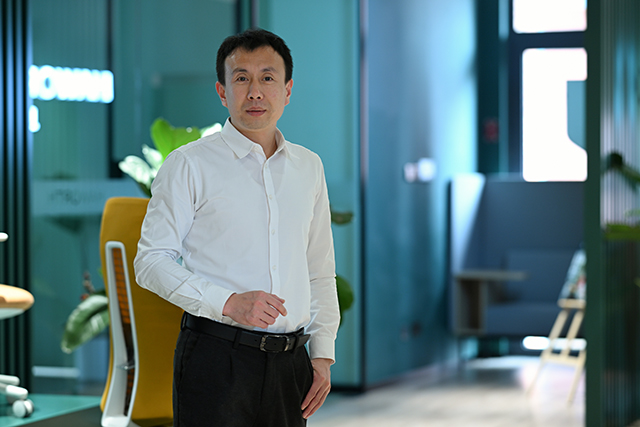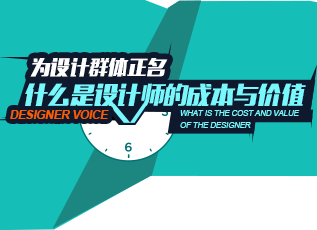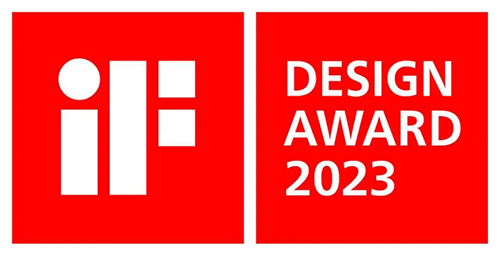八问2015年米兰世博会中国馆主持建筑师陆轶辰
来源:古德设计网 时间:2015-05-25 11:01:08 [报告错误] [收藏] [打印]

2015年5月1日上午,2015年世博会中国国家馆在意大利米兰隆重开馆。历经两年多设计、近一年建造的中国馆以其创新的技术、深厚的内涵、现代的设计语言完美地诠释了中国文化。这既是中国国家馆首次以独立自建馆的形式赴海外参展,同时也是中国当代建筑与世界的一次“对话”。中国馆建筑由清华大学美术学院设计团队与包括了美国和意大利在内的各专业团队通力配合完成,引起了国际社会的高度重视和关注。
Rejecting the typical notion of a cultural pavilion as an object in a plaza, the China Pavilion is instead conceived as a field of spaces. Envisioned as a cloud hovering over a “land of hope”, the Pavilion is experienced as a series of public programs located beneath a floating roof, the unique design of which creates an iconic image for the project and a unique presence within the Expo grounds.

【记者】建成后的中国馆为什么没有使用方案效果图上那层半透明的表皮?改变的主要原因是什么?最终如何确定采用现在表皮?
The final result of the China Pavilion didn’t use the translucent skin design as shown in the original schematic renderings? What was the main reason to change it? How was the current skin design chosen in the end?
【陆轶辰】 这个问题非常有意思,最近来问我们有关中国馆表皮的不少,背后的台词是“你们妥协了”--事实上,“妥协”这个词在我的词典里是不存在的。在网络上大家经常看到的那版效果图,是在2013年底投标阶段的效果图,之后由于涉及国家项目,我们对外没有公布过过程中的模型照片和更新后效果图。我们也没有料到这张投标阶段的效果图影响那么大,以至于大家认为最后中国馆的屋面就是投标效果图里的半透明的银色金属网。
世博会组委会对所有的场馆都有一个强行的要求,就是65%的场地面积需要使用可降解材料或绿色屋面;而在投标阶段,当时业主就咨询过是否可以在屋面上大量使用金黄色琉璃瓦,清华的设计团队当时索性建议用编织竹材来做一个更生态的遮阳屋面,一举两得--这个已经是2013年底的事了。之后从方案深化开始,一直是在思考如何用竹子来作屋面。几个好处:1,竹子在中国文化中的认同感;2,价格平宜,在中国把竹片运到意大利组装;3,最后的遮阳竹板在空间中洒下的阴影,随着时间的变幻微妙地改变着空间体验,体现抽象的中国气韵。
一个在我们这里实习过的年轻建筑师,前一阵子也通过邮件质疑我,是不是妥协了。我邮件回答了他,他很满意,说“我也觉得你不会,按咱们对项目的严苛程度来看”。我很高兴看到这个词,我们对设计的严苛始于对自己的严苛--不会妥协,但会在理解各方诉求的前提下推进。经过这几年的实践,我发现改变其实不是问题,但建筑师如何去改变,是有方法的。好的设计方法,会凝结各方的诉求,把设计带到一个更丰富的层面上去;而纯建筑学的设计探讨,路越走越窄,意义不大。
【蔡沁文】 “妥协”的潜台词是竹编的效果不如银色金属网的好——其实真的想像一下,如果我们用了银色的金属网,在米兰的阳光下闪闪放光,或者是苍白的,对我个人来说并不是更好的结果,也许又会引起其他的联想。我们认为还是竹编的材质更自然内敛,在不同天气情况下有丰富的质感,跟木结构的结合也更好。
【陆轶辰】 You asked a very interesting question. Recently quite a few people asked me about the skin of the pavilion. What they are saying behind is ‘you compromised’. As a matter of fact, we didn’t. The rendering that everyone finds on internet was for the competition at the end of 2013. Since then we haven’t published any updated renderings or model photos because of the confidentiality of the project. We also didn’t expect the rendering would have such an impact that people would actually think the final skin design of the pavilion was going to be locked to the translucent silver metal mesh.
The EXPO committee had a strict request for all the participants – 65% of the projection area of each pavilion should use either recyclable material or green roof; during the competition phase, our client already consulted with us that if the traditional golden porcelain tiles could be used on the roof. Our design group at that time promptly suggested woven bamboo as the alternative to make a more sustainable roof. There are a few advantages: 1. The recognition of bamboo in the Chinese culture; 2. Low cost, especially when shipped from China to Italy for the assembly. 3. The shadows which are casted by the bamboo shading panels into the main space keep altering subtly the experience. It’s an abstract symbol of the essence of the Chinese disposition.
One of the former intern architects of our studio also asked me in email if we had compromised. I replied to his email. He was satisfied and said, ‘I knew you wouldn’t, given how strict we are for our projects’. I was glad to see the word ‘strict’. How strict we are towards our projects comes from how we are towards ourselves. We wouldn’t compromise, but we would move forward while understanding the appeals from every group. After the practice of the past a few years, I’ve realized that it is not a problem for architects to make changes but how we do it requires methods. A good design method will condense all the appeals and bring the design to a much sophisticated level. On the other hand, a pure architectural design discourse will narrow the paths therefore is not as meaningful.
【蔡沁文】 It seems ‘compromise’ means the final woven bamboo isn’t as good as the silver metal mesh – actually if you imagine, had we used the silver panels, the pavilion would have been shining under the strong the intense sun light in Milan now, or it would have been pale white. For me it wouldn’t necessarily have been a better result; people might also associate it with something else. It’s all personally taste if some people think the metal mesh skin would look more modern or pretty. At least I think the woven bamboo is more natural and introvert, with the texture of more richness under different weather conditions. Also it definitely has a better reconciliation with the timber structure.
相关文章
-
王耀:满足客户的客户需求 才是好作品

面对竞争日趋激烈的市场竞争,建筑装饰设计企业应该如何应对?作为设计院的领导,如何引导职场新人快速适应岗位
- 张展翼:平衡设计中的逻辑和非逻辑
- 刘亚滨:青春一路狂飙
- 设计师高媛:没有完美的设计,都有不同的遗憾
- 优秀指导老师专访 | 从选手到导师 周梦琪的“中装杯”之路
- 中装新网专访 | 蒋燕微:用热爱,谱写设计的每个篇章
- 中外建姜靖波:深化设计未来也许更多是经验和软件的结合
- 鴻樣设计郑惠心:创造多方共赢的互动空间
- 南通装饰设计院秦岭:成功的设计创意是实现得了的!
- 蒋缪奕:豪宅市场未来的发展方向
-
什么是设计师的成本与价值

近日,《你个设计师有什么成本?》一文刷爆朋友圈,文中讲了一个故事,表达了大众对成本的理解,也提出了一个有
LINKS
中国室内设计与装饰网 | designboom设计邦 | 新华网 | 中国建筑新闻网 | 搜房家居网 | 北京市建筑装饰协会 | 中装设计培训 | 凤凰家居 | 中国建筑与室内设计师网 | 中国网建设频道 | 筑龙建筑设计网 | 视觉同盟 | 湖南室内设计师协会 | 城视窗 | 中装协设计网 | 非常设计师网 | 新家优装 | 行走吧,媒体团! | 新疆室内设计联盟 | YANG设计集团 | 中式设计 | 大宅国际别墅装修设计 | 四合茗苑中式装修 | 设计王DesignWant & 住宅美学Living&Design |





